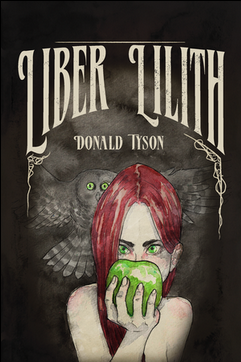
Somnium (forthcoming)
Somnium ("The Dream") by Johannes Kepler is a captivating blend of science fiction, astronomy, and mythology, written in 1608 and published posthumously in 1634. This groundbreaking work explores the possibility of traveling to the Moon, offering a unique perspective on celestial phenomena through the lens of a dreamlike narrative.

The Comte de Gabalis
This short novel of 1670 gave the literary world a lasting gift: the doctrine of Elementary Spirits (Gnomes, Nymphs or Undines, Sylphs, and Salamanders) and their relations with humans from Adam’s time to the present.

The Vampyre
The Vampyre is the first Vampire story published in English, a novella written by John Polidori, physician to Lord Byron. The Vampyre appeared in England’s New Monthly Magazine in April 1819.

The Legend of Sleepy Hollow & Rip van Winkle
Written while Irving was living in Birmingham, England, and then published in 1819. Along with Irving’s companion piece Rip Van Winkle

Oh, Death!
Dark Romanticism loved the irrational, the scary spooky and the demonic Grosteske. The fallen writers explored the worlds of nightmares, psychic disturbances, fears and dark sides of the human, as far as possible. They did not want to show the boundaries between nightmare and reality, but rather to blurr those limit in their works.

The Monk
Matthew Gregory Lewis was in his late teens when he composed and published The Monk. Like Shelley, the Gothic had set his imagination alight, but while with Shelley this flowed into a Neo-Platonic Anarchism, Lewis detonated into a tendrilled three-volumes of sex, satan and unease.


The Castle of Otranto
"The Castle of Otranto," written by Horace Walpole in 1764, is often regarded as the first Gothic novel. Its initial edition claimed to be a translation of a 1529 Naples manuscript found in the library of an ancient Catholic family in northern England.

Sylvan Dread
Those who dwell unseen within the hedge, the grotesques emergent in the weave of tangled roots, the writhing form amid the shadows of the Willow boughs—all are keepers of a rustic and terrible wisdom predating the emergence of mankind. Lurching between disembodiment and wholly manifest flesh, the baleful forces of wasteland and rural barren have long been etched upon the human soul.

Witches Were for Hanging
A novel of Witchcraft in 17th century England telling the tale of the the Nokes family who are genuine witches and their attempts to outwit Matthew Hopkins, the Witchfinder General, and avoid the gallows. The author is one of the world's leading figures in contemporary Witchcraft, a true elder of the Craft, who brings frightening authenticity and genuine traditional insight to this thrilling story.

Operation Cone of Power
It has long been rumoured that on the eve of August 1940, a coven of witches gathered in the New Forest to create an immense surge of magical forces to aid Britain's fight in WWII.

Katy Hunter and the Magic Star
Far away from everything familiar, Katy Hunter dreads the thought of spending six months in the sleepy countryside with relatives she barely knows.


Against the Light
Kenneth Grant began writing the novel in the mid 1980s. He developed it in order to explore, in a fictional setting, many of the themes of 'The Book of the Spider'.

Snakewand & The Darker Strain
This is the second volume in the series of novellas by Kenneth Grant. This volume consists of two stories, both of them concerning the voodoo Bultu, or Cult of the Spectral Hyanae.

Gamaliel & Dance, Doll, Dance!
The first, Gamaliel: The Diary of a Vampire, presents the history of a woman, Vilma, who attempts to invoke unseen Intelligences but takes a wrong turn. She loses her way in the Gamaliel, the Qliphoth of Yesod, and eventually succumbs to vampiric possession. The story unfolds as extracts from her Magical Diary, the editor of which makes a horrifying discovery as the Diary closes.

The Other Child and Other Tales
The first novella, The Other Child, is a tale of two brothers, one a Child of Light, the other of Darkness, and the struggle for a cataclysmic magical power which they each partially embody. A scholar of Ancient Egyptian studies is unwittingly drawn into the struggle, eventually assuming a priestly destiny as events unfold.

Grist to Whose Mill?
This is the rich and gripping first novel by Kenneth Grant. Written in late 1952 and early 1953, the typescript was thought lost for many years.

Liber Lilith
Liber Lilith is a powerful and disturbing novel which tells the story of an unfortunate German occultist, Karl Steiger.
